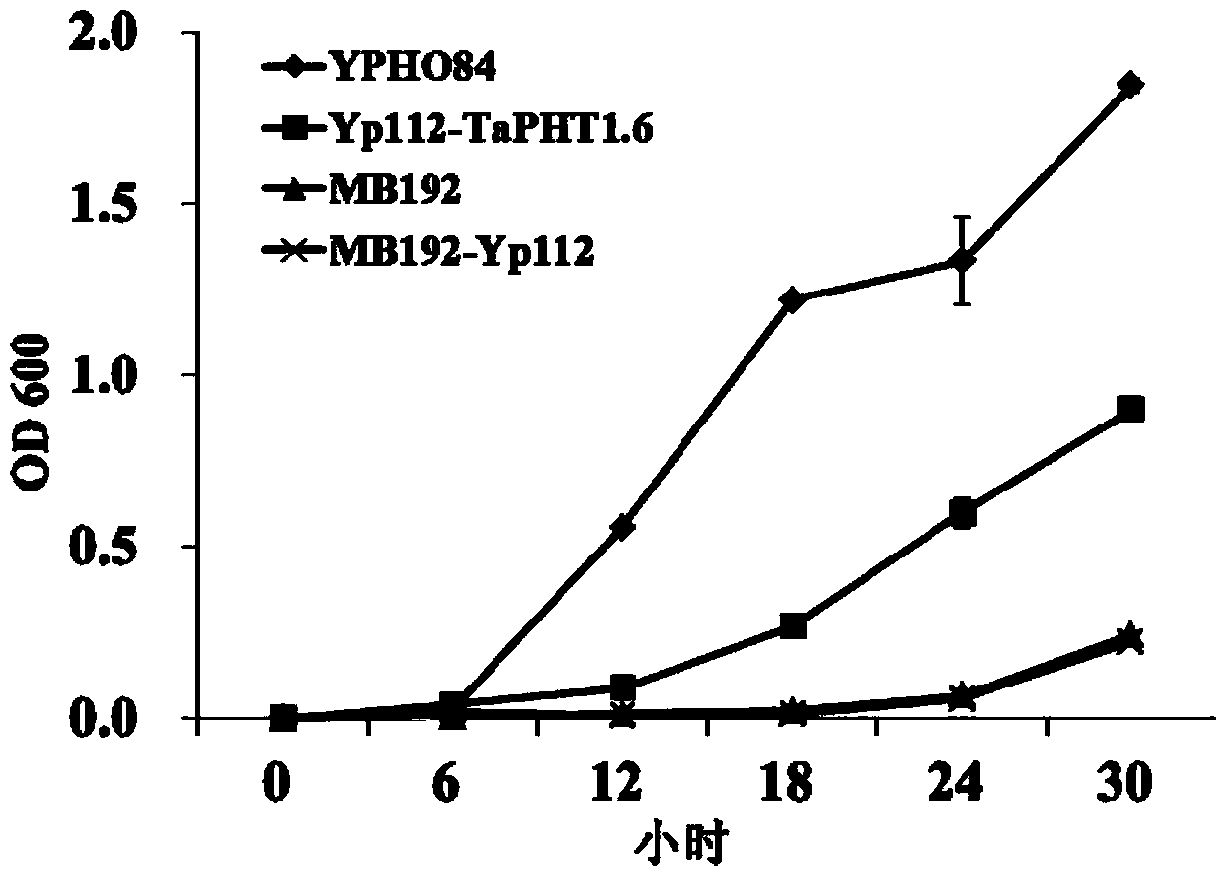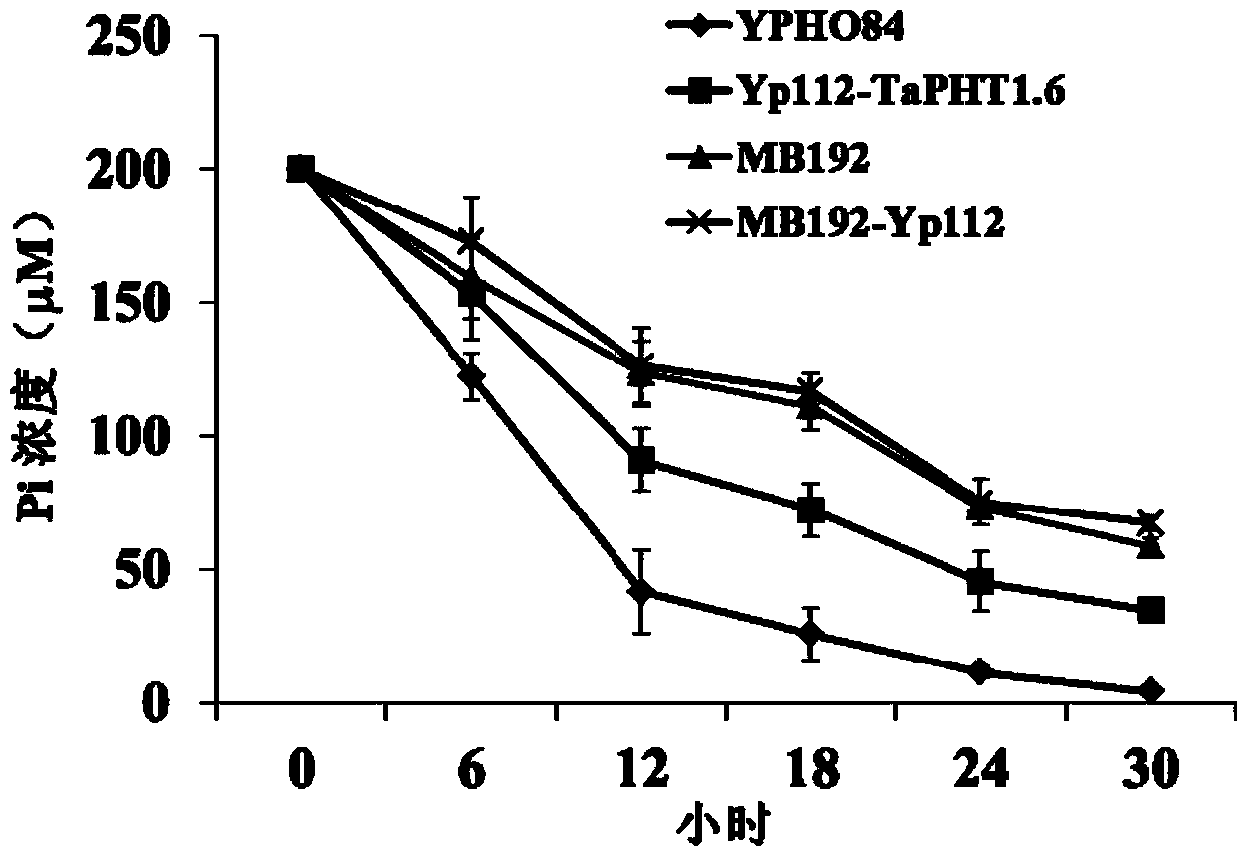Phosphate radical transport protein TaPHT1.6 with phosphorus deficiency response as well as coding gene and application thereof
A coding and protein technology, applied in phosphorus deficiency-responsive phosphate transporter TaPHT1.6 and its encoding gene and application fields, can solve the problems of lack of whole genome sequence information, complex genome, lack of systematic understanding of sequence information and functions, etc. The effect of reducing soil environmental pollution, increasing growth rate and increasing absorption
- Summary
- Abstract
- Description
- Claims
- Application Information
AI Technical Summary
Problems solved by technology
Method used
Image
Examples
Embodiment 1
[0037] Embodiment 1, discovery of TaPHT1 protein and its coding gene
[0038] 根据大麦中HvPHT1(AAN37900,AY187020,AY187025,AAO72435,AAN37901,AAO72436,AAO72440,AM904733)和水稻中的OsPHT1(AAN39042,AAN39043,AAN39044,AAN39045,AAN39046,AAN39047,AAN39048,AAN39049,AAN39050,AAN39051,AAN39052)设计 Conserved primers, using the BAC library of wheat (wheat variety Xiaoyan 54) as a template, screened a single clone with amplified target fragment, after sequencing the BAC clone, obtained a homologous sequence of PHT1, the sequence was 1620bp long, without The intron presumably encodes a polypeptide consisting of 539 amino acid residues, named TaPHT1 protein.
[0039] The amino acid sequence of the TaPHT1 protein is sequence 2 in the sequence listing, and the nucleotide sequence of the gene encoding the protein is sequence 1 in the sequence listing.
[0040] Sequence 1 in the Sequence Listing can also be artificially synthesized.
Embodiment 2
[0041] Example 2. Functional complementation test of TaPHT1 protein and its coding gene
[0042] 1. Construction of yeast expression vector
[0043] Construct the expression vector of TaPHT1.6 expressed in yeast: according to the p112A1NE insertion site requirements, first connect the two ends of TaPHT1.6 with corresponding restriction sites to the T vector, and then insert TaPHT1.6 by restriction restriction Ligated into the insertion site of p112A1NE.
[0044] The specific process is as follows:
[0045] 1. Using the DNA molecule shown in sequence 1 in the artificially synthesized sequence list as a template, design a forward primer and a reverse primer according to the sequence of TaPHT1.6, and perform PCR amplification;
[0046] Forward primer: 5′-GTCGAATTC ATGGCGCGCGAGCAGCTGGA-3'; EcoRI restriction site was introduced into the forward primer;
[0047] Reverse primer: 5′-CTAGCGGCCGCTCACACGGGC ACCGTCCTGG-3 Reverse primer introduces NotI restriction site.
[0048] PCR ...
PUM
 Login to View More
Login to View More Abstract
Description
Claims
Application Information
 Login to View More
Login to View More - R&D
- Intellectual Property
- Life Sciences
- Materials
- Tech Scout
- Unparalleled Data Quality
- Higher Quality Content
- 60% Fewer Hallucinations
Browse by: Latest US Patents, China's latest patents, Technical Efficacy Thesaurus, Application Domain, Technology Topic, Popular Technical Reports.
© 2025 PatSnap. All rights reserved.Legal|Privacy policy|Modern Slavery Act Transparency Statement|Sitemap|About US| Contact US: help@patsnap.com



